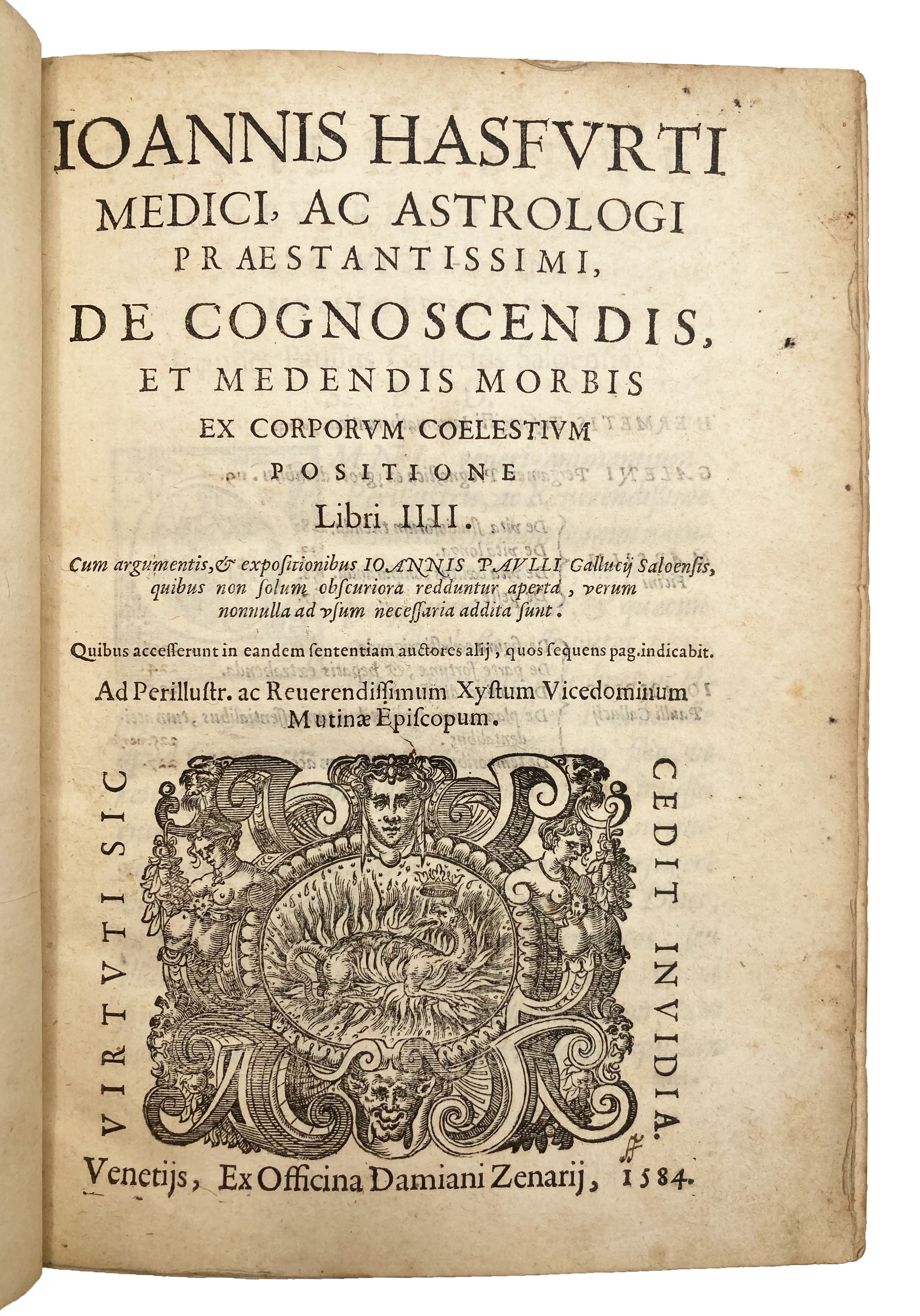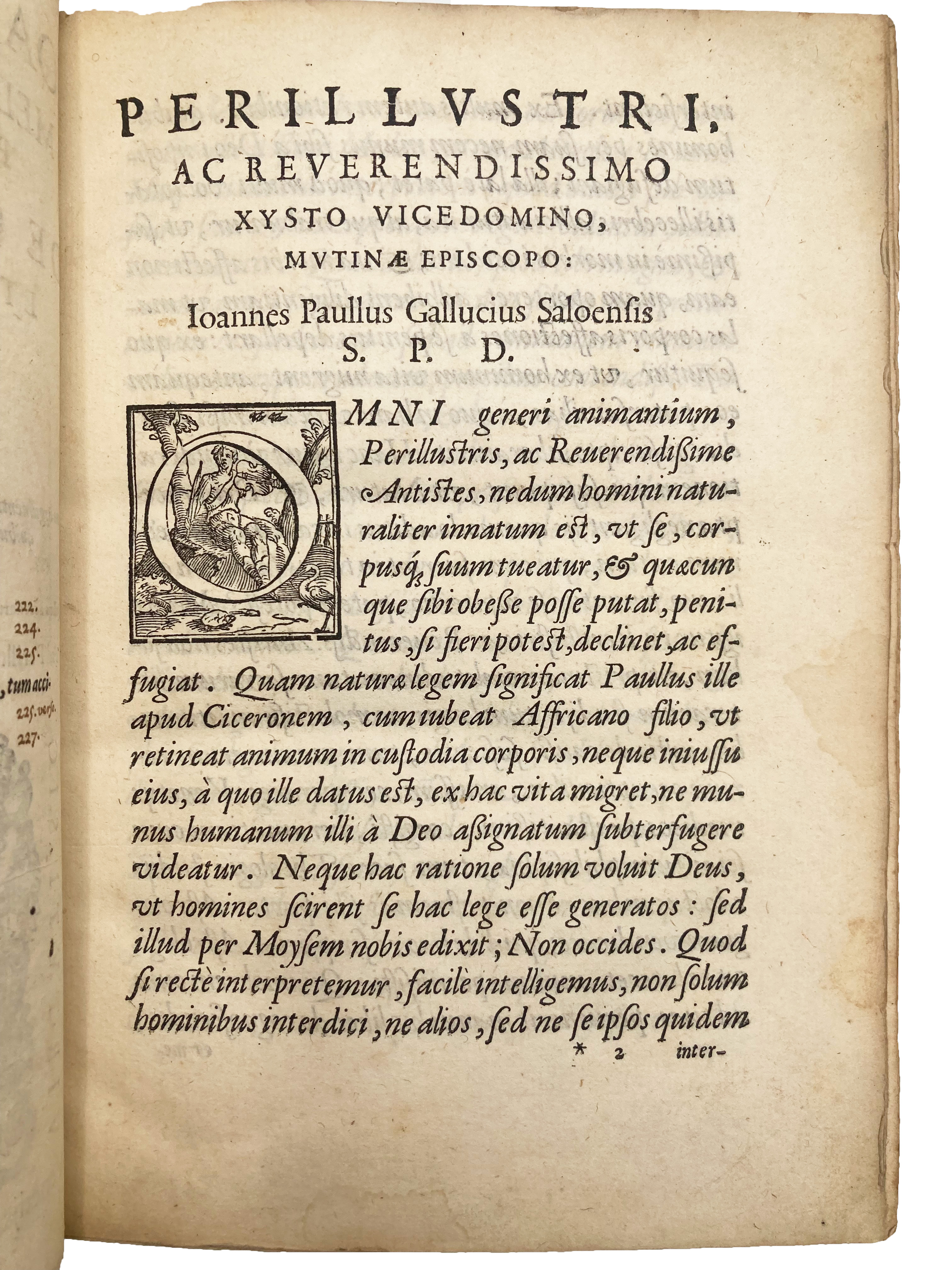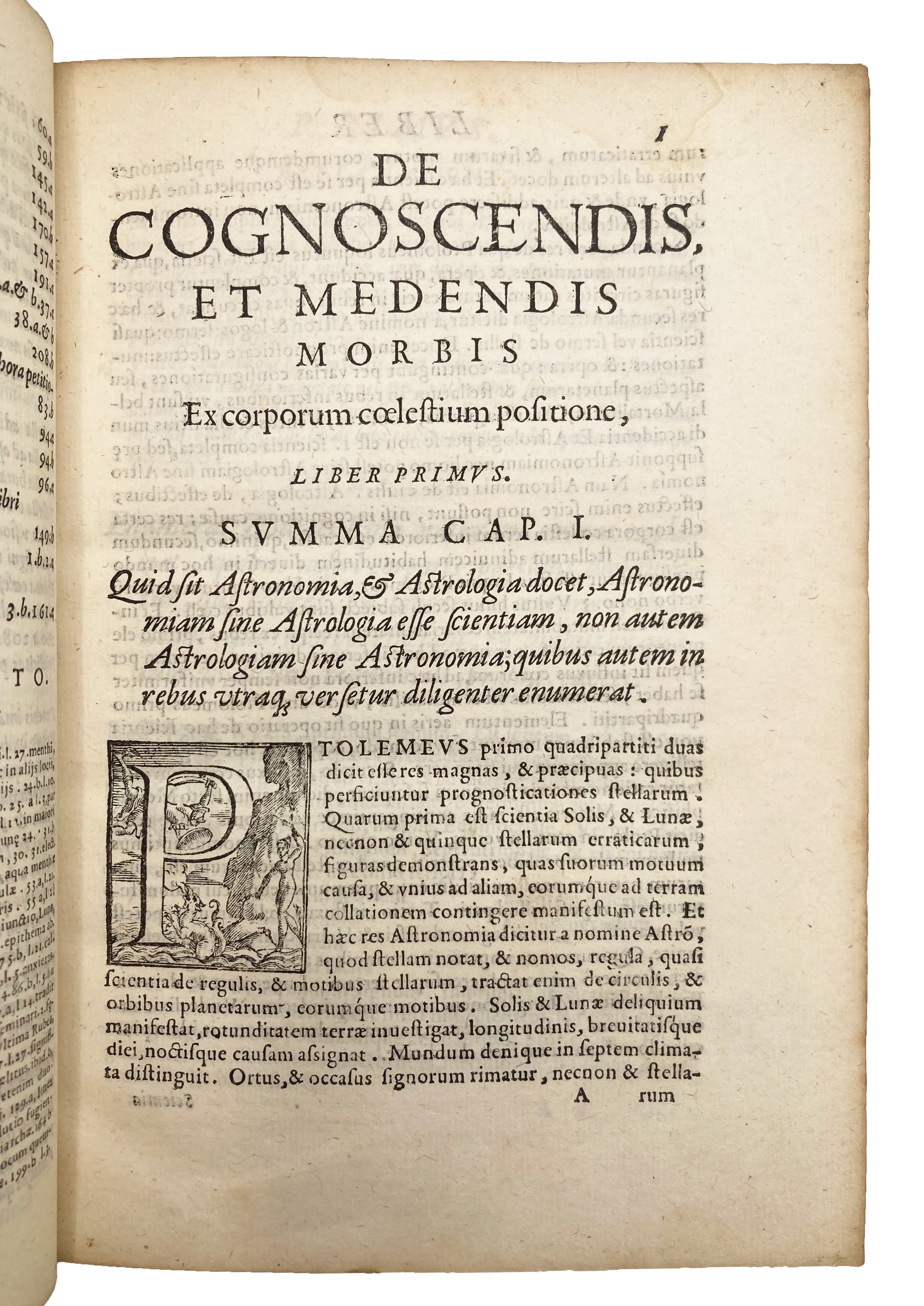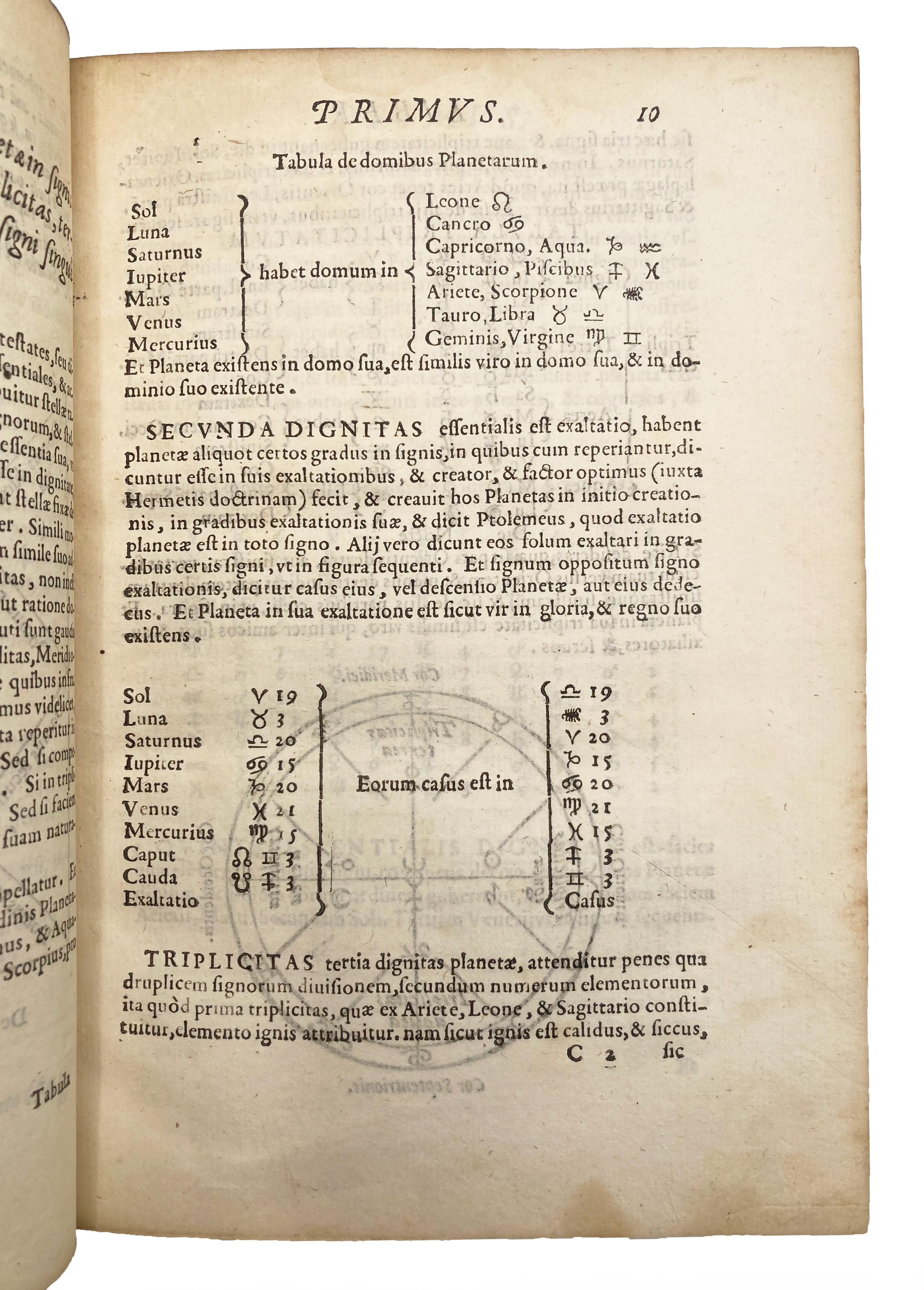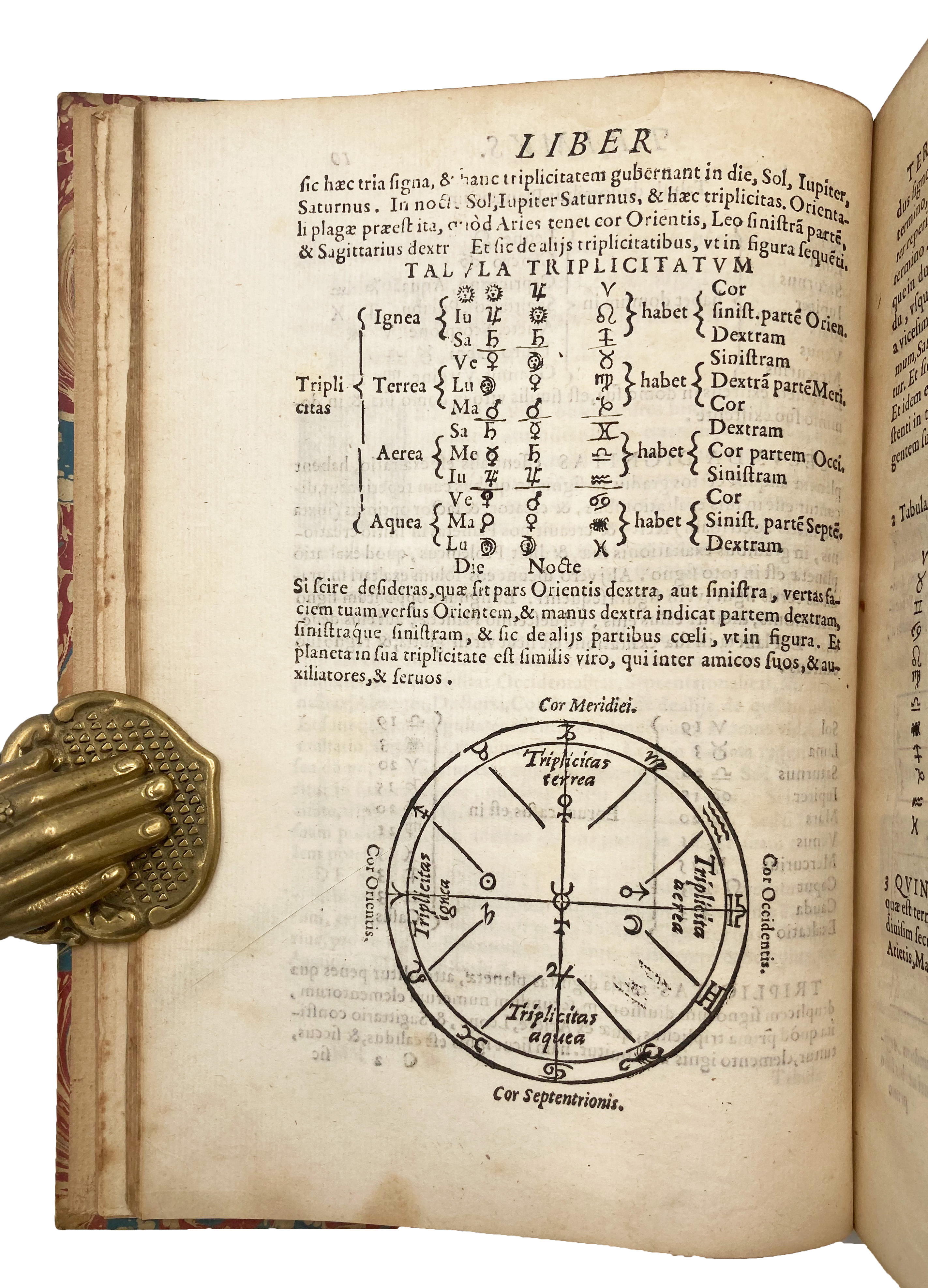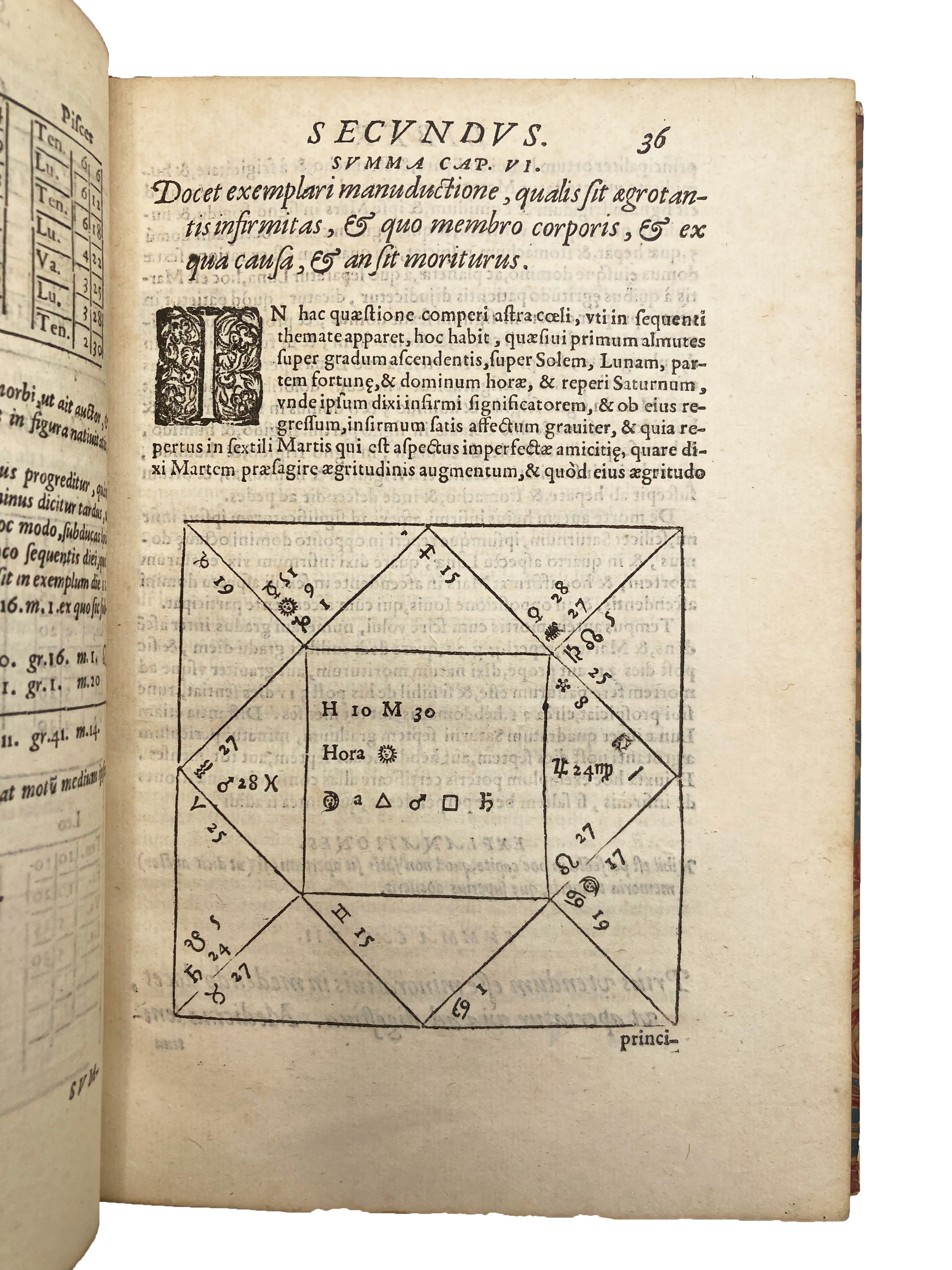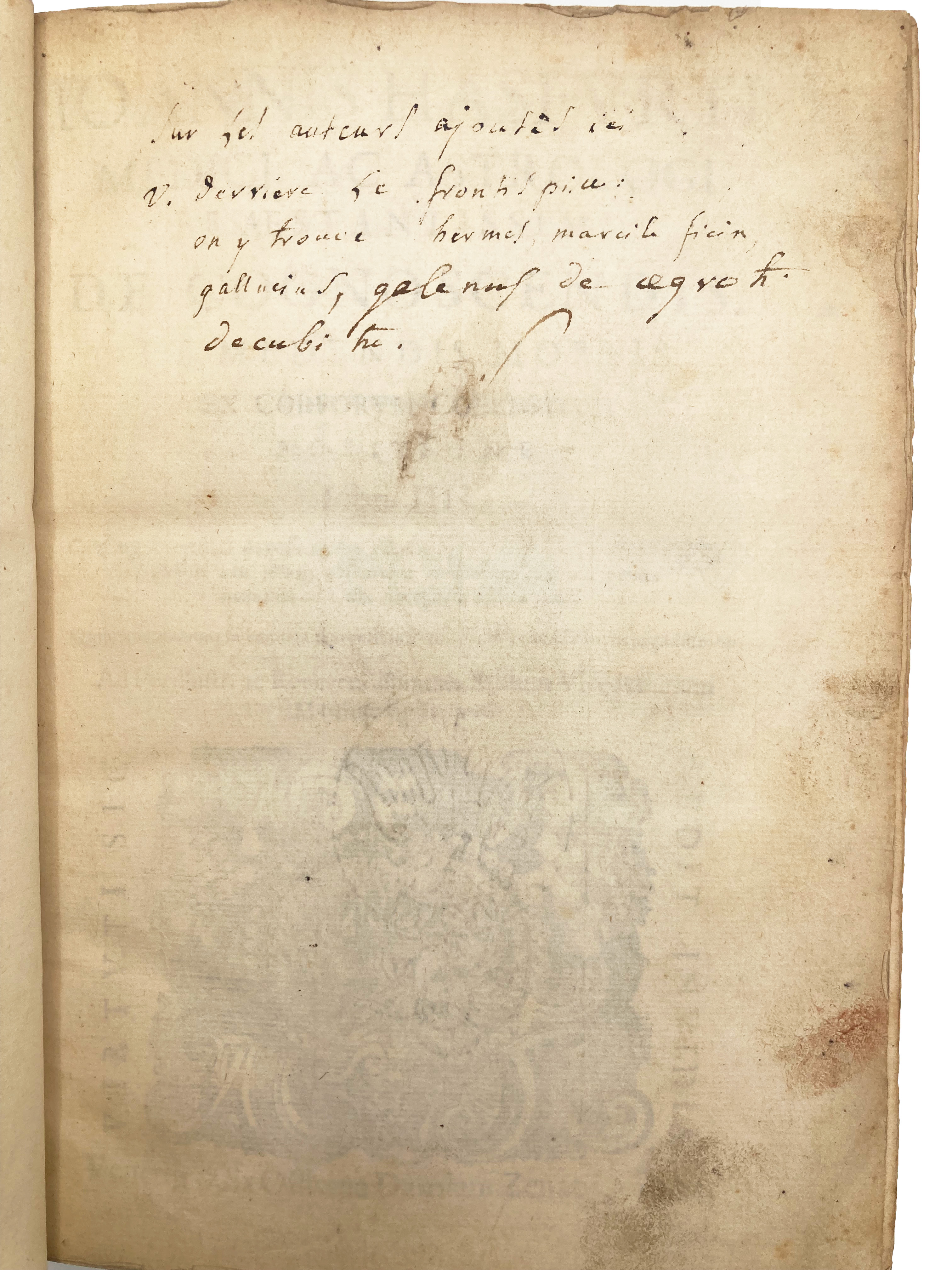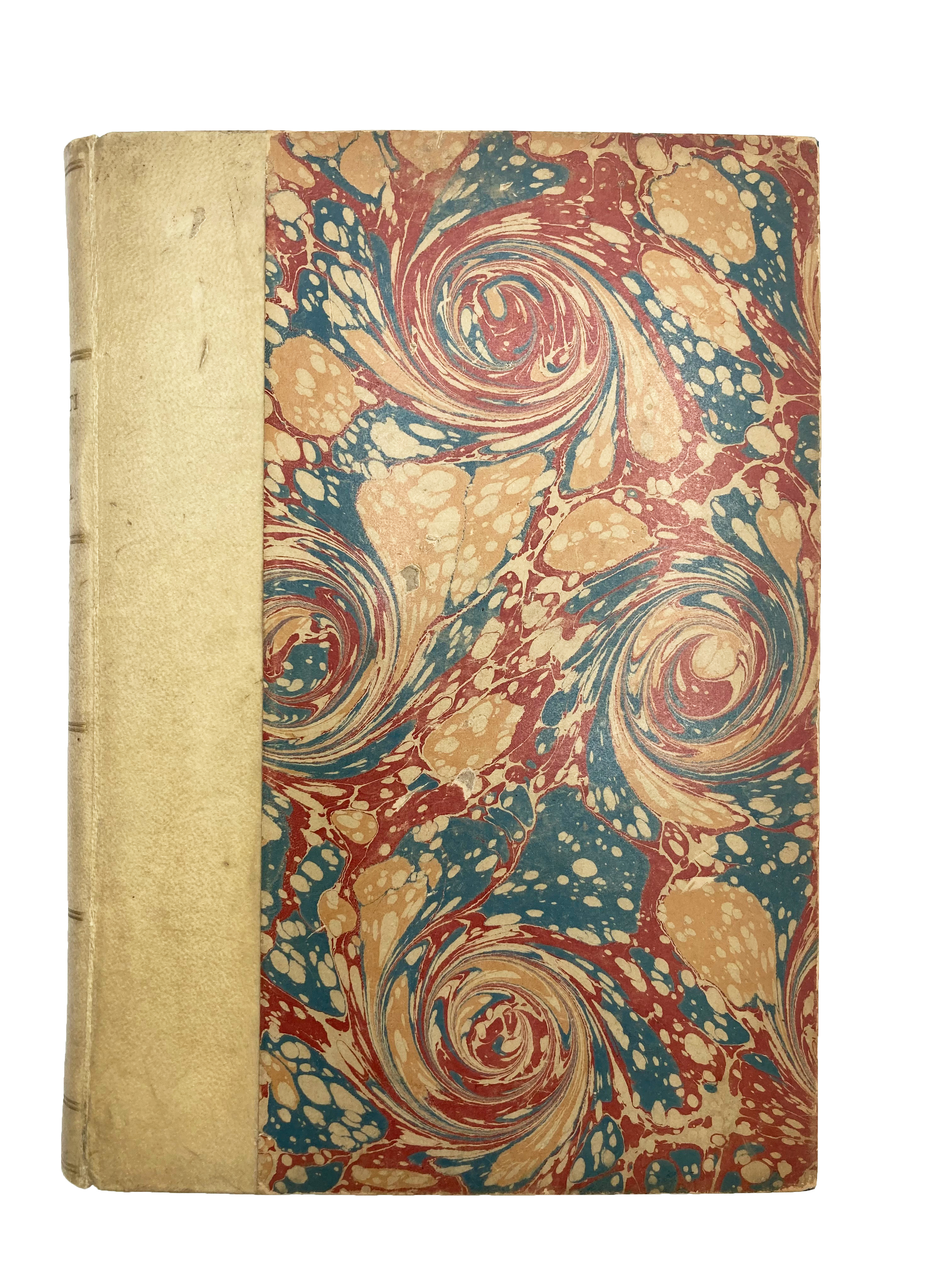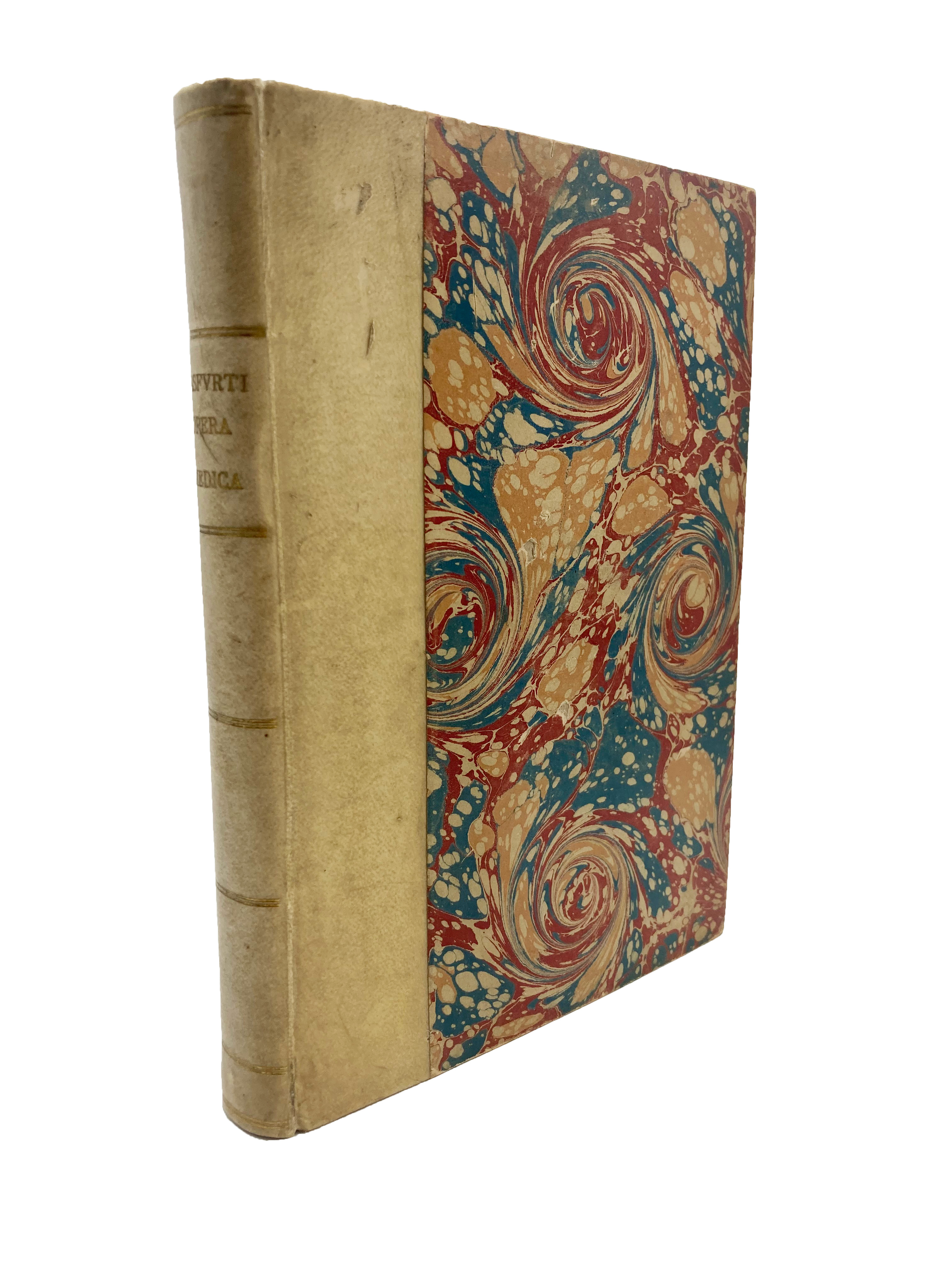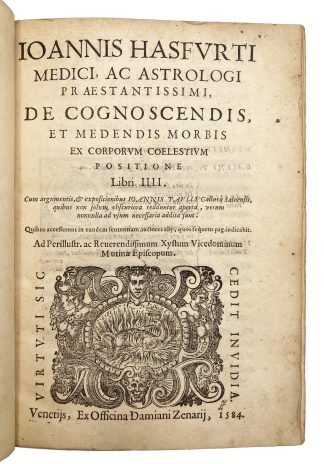VIRDUNG, Johannes.
WITH GALEN, FICINO, GALLUCCI AND HERMES TRISMEGISTUS
De cognoscendis, et medendis morbis ex corporum coelestium positione libri IIII.
Venetiis, Ex Officina Damiani Zenarii, 1584£1,650.00
FIRST EDITION. 4to. ll. (xii) 228. Wanting volvelle to G4v (sometimes found issued as a folding leaf with instructions for assembly, but missing in several copies that we traced), hole repaired, threads visible below repair to G4r indicating assembly at some point. Woodcut publisher’s device to t-p. ½ and ¼ page woodcut diagrams to text. Woodcut initials, head- and tailpieces. Modern quarter vellum over marbled boards. Contemp. ms. underlining, one or two marginal notes and textual corrections. C17 5-line French inscription to fly. C1 with two deliberate cuts without loss, one with partial repair to recto, C2 also affected by one lateral cut without loss. Slight worming to last quire affecting one or two letters. T-p dusty, occasional slight browning, intermittent very light waterstain, the odd margin very lightly foxed. Ink smudge touching two words on Ee4, ink burn to M1v touching two letters, a good, well margined copy.
First edition of this intriguing work by the German astrologer and physician Johannes Virdung (1463-1538/39), published posthumously as part of a compendium of medical and astrological texts including Hermes Trismegistus, Galen, Marsilio Ficino (1433-99), and its editor Giovanni Paolo Gallucci (1538-1621), and illustrated with numerous woodcut genitures and diagrams depicting celestial movements.
Virdung begins with a defence, derived from Ptolemy, of judicial astrology used in conjunction with astronomy. He enumerates the signs of the Zodiac and the planets and describes what foodstuffs and illnesses they influence, with an additional table clearly setting out which body parts relate to which planets; for example, Aries governs the head and eyes and causes toothache, while the moon governs melons, gourds and cucumbers, as well as the left eye only, the stomach, and women’s menstruation. Virdung then provides instruction in using geniture diagrams, i.e. tables which show the positions of the planets and stars, allowing the user to cast nativities and make prognostications of illnesses and even the hour of death (f. 33r). The second book is concerned with cures for the physician to respond to the diagnostics and prognostics of their astrological calculations: humoral purgation through vomiting, clysters (enemas), including recipes for the latter, laxatives, and bloodletting. Virdung also includes recipes for unguents, electuaries, pessaries and decoctions of herbs. The final book contains numerous diagnostic analyses of urine. The diagrams depict the arrangement of the houses of the Zodiac, the motions of the planets within the houses, the lunar phases, the motions and phases of the moon in relation to the sun and the houses of the Zodiac, and a conjunction of the sun with a planet.
Hermes Trismegistus was a legendary Hellenistic figure whose suppositious work, written for ‘Amon the Egyptian,’ is a description of the conjunctions of the moon with the planets, translated by the Flemish mathematician Johannes Stadius (1527-79) and edited with commentary by Gallucci. Gallucci, whose own brief tracts and tables of astrology appear at the end, was also the overall editor; his notes to Virdung include a table of differences between Girolamo Cardano and Ptolemy concerning the influences of the planets. Also here are brief extracts from Galen in praise of astrology as a diagnostic tool and describing astrological conjunctions, as well as the Florentine Platonist Marsilio Ficino’s De Triplica Vita, written in the 1480s; the first book is on healthy living, the second on prolonging life, and the third on the celestial life, being a commentary on Plotinus. This esoteric work, a mixture of astrology, medicine, philosophy and magic, portrayed scholars as being naturally prone to the influence of Saturn and to melancholy, which could be alleviated through wines, clean air and, above all, music. The last work by Ficino is a Latin translation of his work on the plague, Consiglio contro la pestilenza, written following several outbreaks of bubonic plague in Florence during his lifetime.
Not in Ferguson, Osler or Heirs of Hippocrates. NLM 4631. Wellcome 3077. Gardner 1261. EDIT 16 CNCE 39524. BM STC It., p. 729. Not in Adams.

